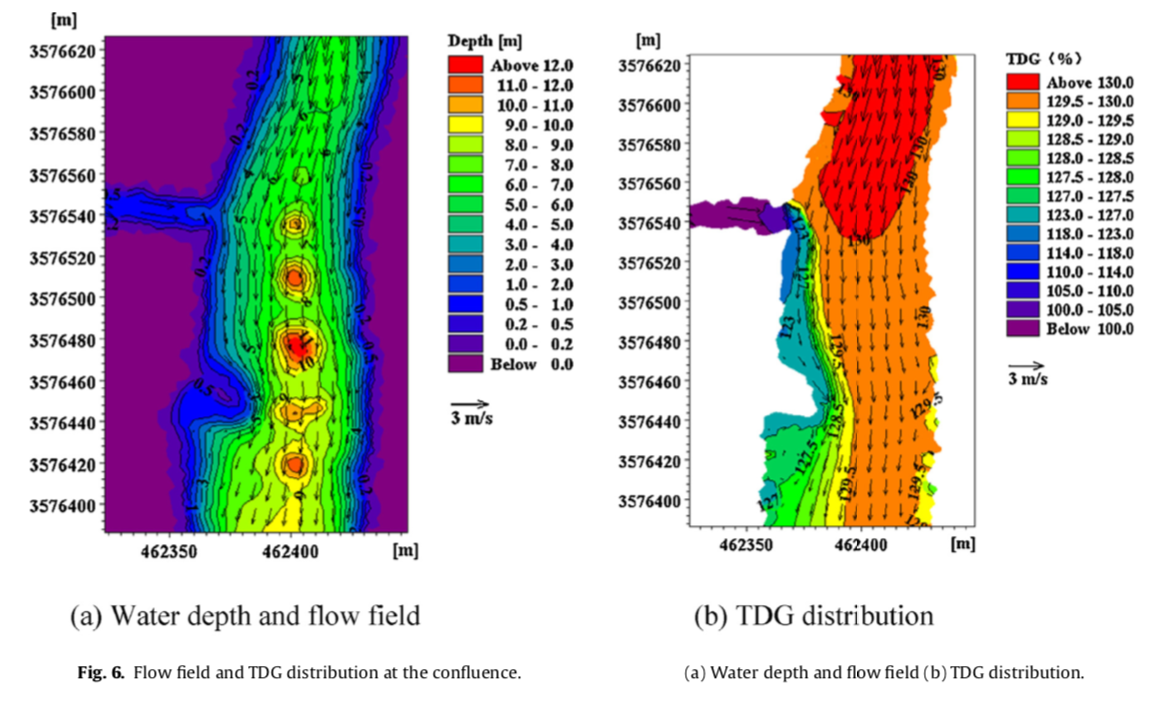Shelter construction for fish at the confluence of a river to avoid the effects of total dissolved gas supersaturation
Total dissolved gas (TDG) supersaturation downstream has a negative environmental effect on fishes. It is caused by discharge from high dams and increases the incidence of gas bubble disease and fish mortality. Downstream of a high dam, there is an area with low TDG saturation due to the gradual mass exchange of gases between the separation zone and the mainstream and the long retention time in the confluence, which contributes to the dissipation of saturated TDG at the confluence of the mainstream and its tributaries. This area can provide a temporary shelter for fish to avoid the effects of TDG supersaturation during dam discharge. A depth-averaged, two-dimensional model of TDG dissipation at a river confluence was established. The concentration field was verified by a flume experiment. A numerical simulation of the TDG at the confluence of the Zumuzu River and its tributary, the Mozigou River, was conducted. The simulation showed that the convergence of the tributary, which had a low TDG saturation level, could reduce the TDG saturation level of the mainstream. However, the low-saturation area was not large enough for fish to avoid the negative effects of TDG saturation due to a sharp river slope and a large flow ratio between the mainstream and its tributary. To expand the suitable shelter area with low TDG supersaturation levels in order to provide a suitable shelter for fish, some engineering measures were explored, including the excavation of the riverbed and the construction of resistance obstacles. After the engineering measures were introduced, we observed a 30-fold increase in the size of the area with low TDG saturation, which was as high as 10005 m2 at 110% of the TDG saturation. Combined with the comprehensive analyses of the flow velocity and the water depth, the confluence region was thought to be suitable to protect the fish from the effects of TDG supersaturation. This study provides an important reference for protecting fish during high dam discharge.


